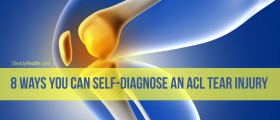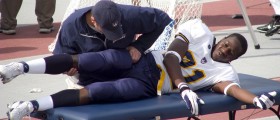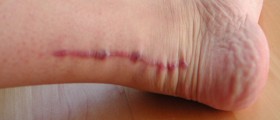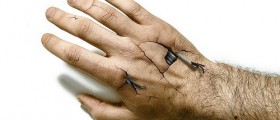What Exactly is a Patellar Reflex?
In order to understand what a patellar reflex is, first it is important to be sure what the patella is. Patella is a bone in the knee, or, to be more precise, it is the knee cap, and it functions as the knee extension, increasing the force of the tendon on the femur.
Patellar reflex is actually another term for the knee jerk, which is a typical reaction when, for example, a doctor taps on the patellar tendon, which is located under the knee, with a tendon hammer. This patellar reflex is a result of stretching of the quadriceps muscles in the thigh. The same stretch reflex can be expected when a muscle or tendon in that area is hit, and this is the Somatic reflex arc. What really happens then is that the muscle contracts and many people may not know that this response is actually the reflex of the spine.

When it comes to the importance of the patellar reflex, it is important to mention that it plays a significant role in maintaining posture and balance, thus allowing a person to walk without having to think about every single step.
Patellar Reflex Test and Its Purpose
The patellar reflex test is done in order to check the sensory response when the doctor strikes the patellar tendon hammer a little under the knee cap. The main purpose is to determine the state of the nervous system; whether it is good or not, and whether there is any damage to the motor nerve or spinal cord.
The person may be in a sitting position with the knees bent, or with one leg crossed in a way that the upper foot hangs off the floor. This test can even be done in patients who are not aware of the fact that the test is being performed.
The expected response, which is considered a normal and healthy reaction, consists of extending the leg and the same leg coming to rest. In case when there is no response to the tap by the tendon hammer, or if the response is not as it should be, the doctors refer to this situation as Westphal’s sign.
It is also possible that multiple oscillations occur as a response, and that is a sign of some cerebellar disease. There are some scientific opinions that this reflex may be related to the mental state of the person in question.
- Generally, as an individual ages, the neuromuscular system is reported to be affected by structural and functional changes that tend to lead to a gradual decline in neuromuscular performance.
- Some studies reported that the elderly have weak and delayed neuromuscular reflexes, whereas others have reported no change or even enhanced amplitude in reflex response with aging.
- A reflex quantification device was built to firmly hold the reflex hammer at the desired position. The holder consists of a vertical beam and a horizontal rod, to which a Queen's reflex hammer and set-square were attached. A screw was used to fix the set-square to the tip of the reflex hammer to measure the tapping angle, and fasten the entire structure onto the horizontal rod. This helps to restrict the motion of the reflex hammer to a single plane.
- A total of 40 subjects, 19 males and 21 females, participated in the study. The participants were assigned to three different groups on the basis of age: Group 1 (26–38 years old), Group 2 (39–51 years old), and Group 3 (52–64 years old).
- The reflex responses were significantly different at all tapping angles and with the reinforcement technique. The trends observed include a decline in reflex response with an increase in age and an increase in the magnitude of reflex response with larger tapping angles.
- Overall, no significant difference was found in the reflex response between the left and right side, although reflex responses were slightly higher on the right side.
- medlineplus.gov/ency/article/007256.htm
- www.cdc.gov/nchs/data/dvs/2011_2s.pdf
- Photo courtesy of Nenad Stojkovic by Flickr: www.flickr.com/photos/nenadstojkovic/49420070781

















Your thoughts on this
Loading...